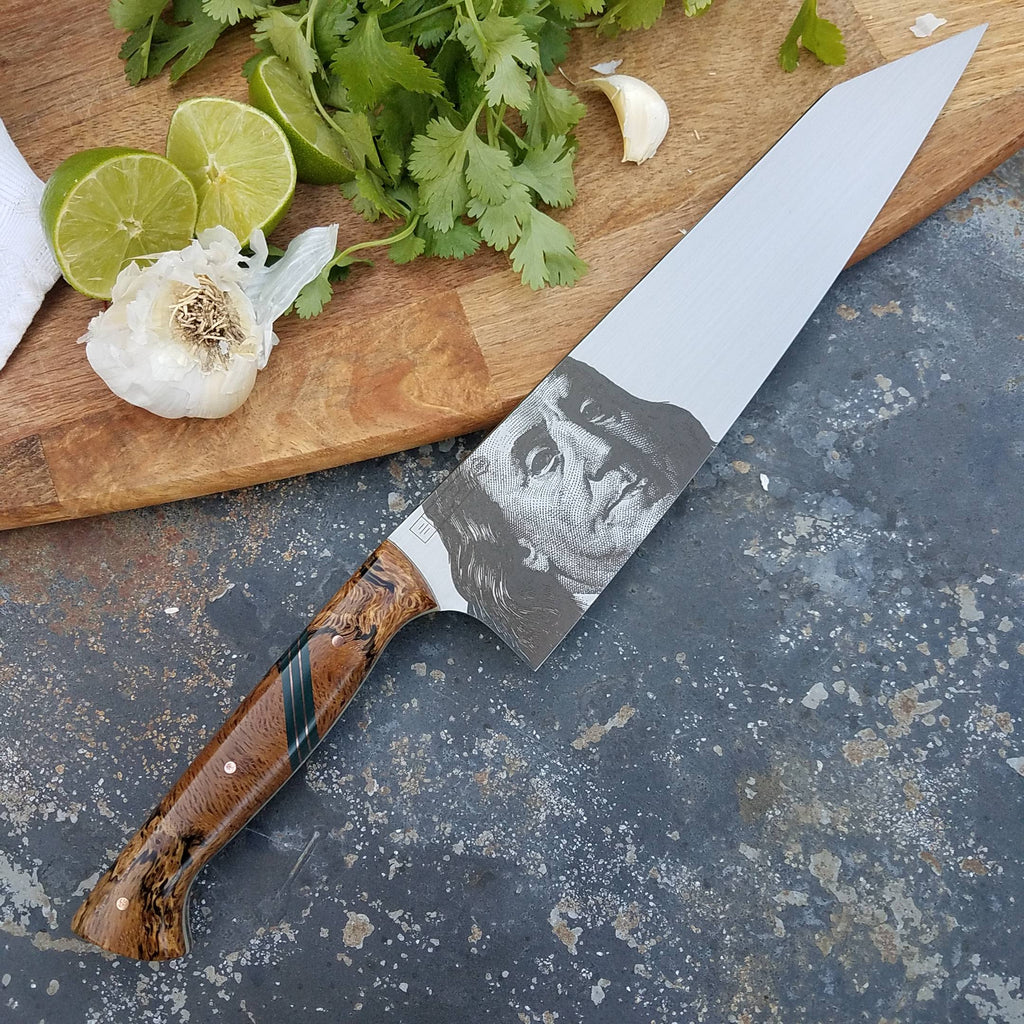
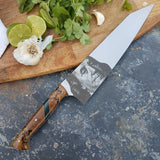
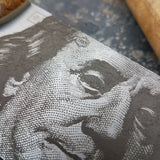
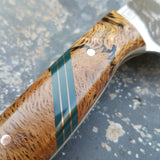
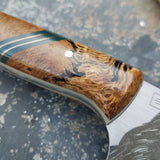
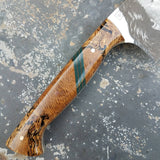
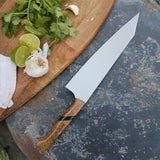
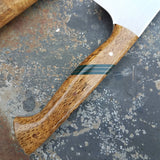
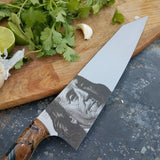
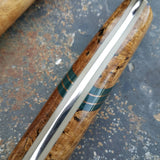
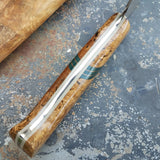
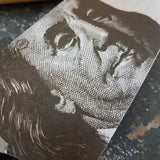
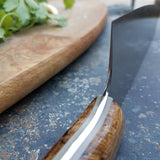
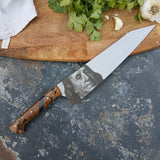
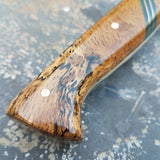
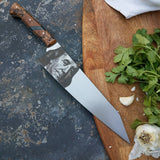
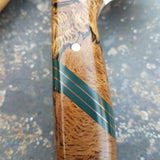
NORA #1683 - 10' AEB-L Kiritsuke - Benny
$ 521.88
KNIFE HIGHLIGHTS
- Blade Type: Kiritsuke
- Blade Length: 10 Inches
- Total Length: 15 Inches
- Handle Style: Western | Right or Left Hand Use
- Steel: AEB-L Stainless Steel
- Handle Materials: Old Growth Spalted White Oak (stabilized), Forest Green, Tan & Black G10 (for liners and middle accent striping), Copper Sheeting, Copper Pins
- Rockwell Hardness: 62 HRC
- Grind Type: Full Flat Hybrid - Performance Grind (3 different bevels blended)
- This Blade is Ground...
- Thin for Performance (best performance but delicate)
- Thick for Durability (tough, built to last for heavy wear-n-tear)
- >>> Mid-Range with Special Geometry (specially ground for food release and glide but blade is kept slightly thicker for durability)
- This Knife Feels...
- Heavy in Hand (Hefty. Durable.)
- Light (nimble, maneuverable)
- >>> Not too heavy, not too light (Switzerland. Fitting weight for the size of the knife.)
GENERAL USES OF THIS KNIFE:
KIRITSUKE KNIFE
This blade shape is our take on the traditional Japanese Kiritsuke knife.
A Kiritsuke knife is one of the very few Japanese knives that is considered multi-purpose. It is a hybrid between a Yanagi (fish slicer) and a Usuba (vegetable knife.). A Kiritsuke knife works well for slicing and breaking down protein but it also excels at vegetable prep. and general purpose tasks. In Japanese kitchens, the Kiritsuke knife is reserved only for the executive Chef as a sign of respect and also due to the skill needed to efficiently use these knives.
Our Kiritsuke design does not have as flat of a belly as the more traditional Japanese style knives. We have done this to allow just the slightest amount of rock in the cut. We feel it adds a bit more versatility to the knife.
ENGRAVING:
In case you are unfamiliar with US currency, the engraving pictured is the face of Benjamin Franklin. Franklin was never a US president but he is considered one of the primary, founding fathers of our nation. His face graces our $100 bill, the highest in current circulation, and as such, his image is inexorably linked with the idea of money in our country.
So that much is self explanatory but what it means to you is up for interpretation. This knife could be motivation to make the money, it could be a reward for already making the money, or it could be some sort of tangible reminder of the politics (or deficit) of 2020. We will let you decide. Whatever your motivation, we just really are in love with the way the engraving turned out on this one. It may be one of our favorite engravings to date.
HANDLE DESIGN & MATERIALS:
Every one of our knives is handmade, unique and numbered. This knife is number 1683 and that corresponds to the production number. (We've numbered every knife we have made since we started our company.) 1683 was also the year that Josiah Franklin (Benjamin Franklin's father) emigrated from Banbury, Oxfordshire, to Boston, Massachusetts. Coincidence? Yes, entirely.
This NORA knife has been handled with a stunning piece of spalted white oak that hails from the woods of North Carolina has been stabilized for added durability. This wood is older and has a beautiful gnarled grain that we absolutely love. We accented this handle with three stripes of forest green G10 which is separated by very thin copper sheeting. The copper and green color choice were a nod to the engraving. Tan G10 liners were added for further contrast and durability.
Wood stabilization is an added feature that we offer with our knives. Wood that is stabilized has been injected with a clear acrylic resin under a vacuum process. Stabilization helps to minimize, if not eliminate, any cracking, warping, shrinkage and/or expanding of the material. Stabilized wood will not absorb water and is generally impervious to oils. The process helps to ensure your knife has a long lifespan in the kitchen.
STEEL INFORMATION:
AEB-L STAINLESS STEEL
This knife blade is composed of AEB-L stainless steel which is a high-quality Swedish metal, originally developed for razor blades. Recently, steel suppliers have made this steel available in thicker sheets and it has proven to be an excellent adaptation for the cutlery industry.
AEB-L has a beautiful balance of carbon and chromium and, with proper heat treatment, this steel produces both a very fine edge as well as excellent toughness and edge stability. The fine grain structure also makes this steel very easy to sharpen. We believe it is one of the finest stainless steels available on the market today for use with kitchen knives.
As a side note, there are two things we like to mention about this steel:
1.) This steel responds beautifully to honing and if the knife is honed regularly it should need infrequent sharpening.
2.) AEB-L is a stainless steel but just barely. The concept of stainless steel is very misleading because every steel is, at some level, reactive to water and other elements.
The higher carbon content in this stainless is what allows it to get a fine edge and higher hardness compared to many other stainless steels but it also has a tendency to sometimes form very fine rust spots on the blade. If this happens, these are easily removed with a green or red scotch brite pad and usually the rough end of a kitchen sponge will also do the trick. Take extra care to remove any excess wetness that remain on this blade. Drip drying is NOT recommended.
